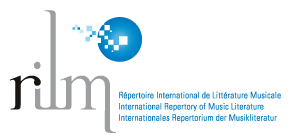Two studies on Beethoven
Abstract
Two independent studies. The first one takes as its point of departure a narrative conception of the musical work (Ricoeur). By means of brief analyses of 4 Beethovenian works from different periods, it tries to sketch the change undergone by the composer in his manner of presenting and resolving conflict. Beginning in the "heroic" period (Patéthique Sonata, 5th. Symphony) with simple, static conflicts the resolution of which is forced by a will alien to the conflicting materials, he arrives in the 9th Symphony to a more dynamic formulation and an immanent resolution. In such late works as the op. 131 Quartet. however, he has renounced resolution. The second study deals with the 9th Symphony, especially from the viewpoint of its reception. Taking the idea of " feast" or "festival" (as defined by sociology and anthropology) as a point of reference, it examines the variety of heterogeneous and extravagant elements that make it so unsettling. It invites the reader to listen to its incoherence, to its juxtaposition of the sublime with the grotesque, in order to loose that excessive familiarity that threatens to obliterate its subversive potential and tum it into a trivial commodity.
Downloads
Published
Issue
Section
License
ATTRIBUTION-NONCOMMERCIAL 4.0 INTERNATIONAL
https://creativecommons.org/licenses/by-nc/4.0/
You are free to:
- Share — copy and redistribute the material in any medium or format
- Adapt — remix, transform, and build upon the material
- The licensor cannot revoke these freedoms as long as you follow the license terms.
Under the following terms:
- Attribution — You must give appropriate credit , provide a link to the license, and indicate if changes were made . You may do so in any reasonable manner, but not in any way that suggests the licensor endorses you or your use.
- NonCommercial — You may not use the material for commercial purposes .
- No additional restrictions — You may not apply legal terms or technological measures that legally restrict others from doing anything the license permits.
Notices:
You do not have to comply with the license for elements of the material in the public domain or where your use is permitted by an applicable exception or limitation .
No warranties are given. The license may not give you all of the permissions necessary for your intended use. For example, other rights such as publicity, privacy, or moral rightsmay limit how you use the material.







